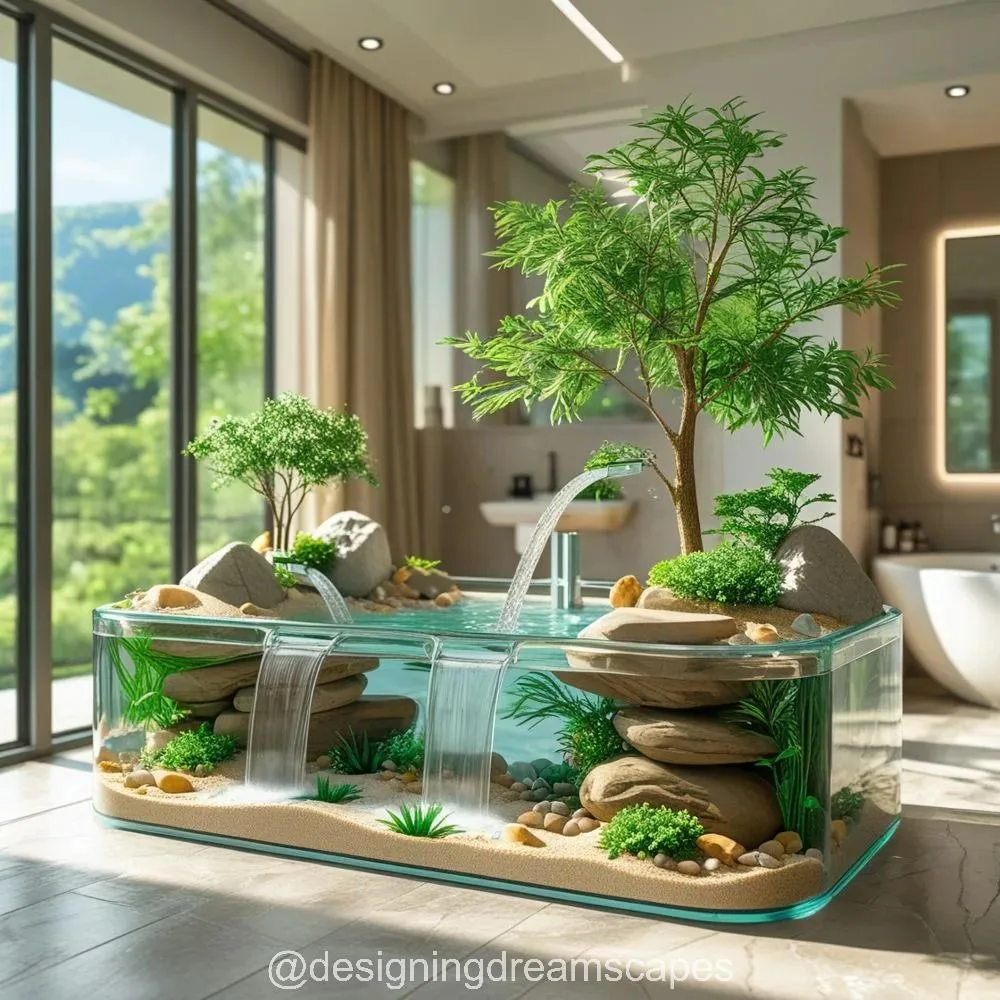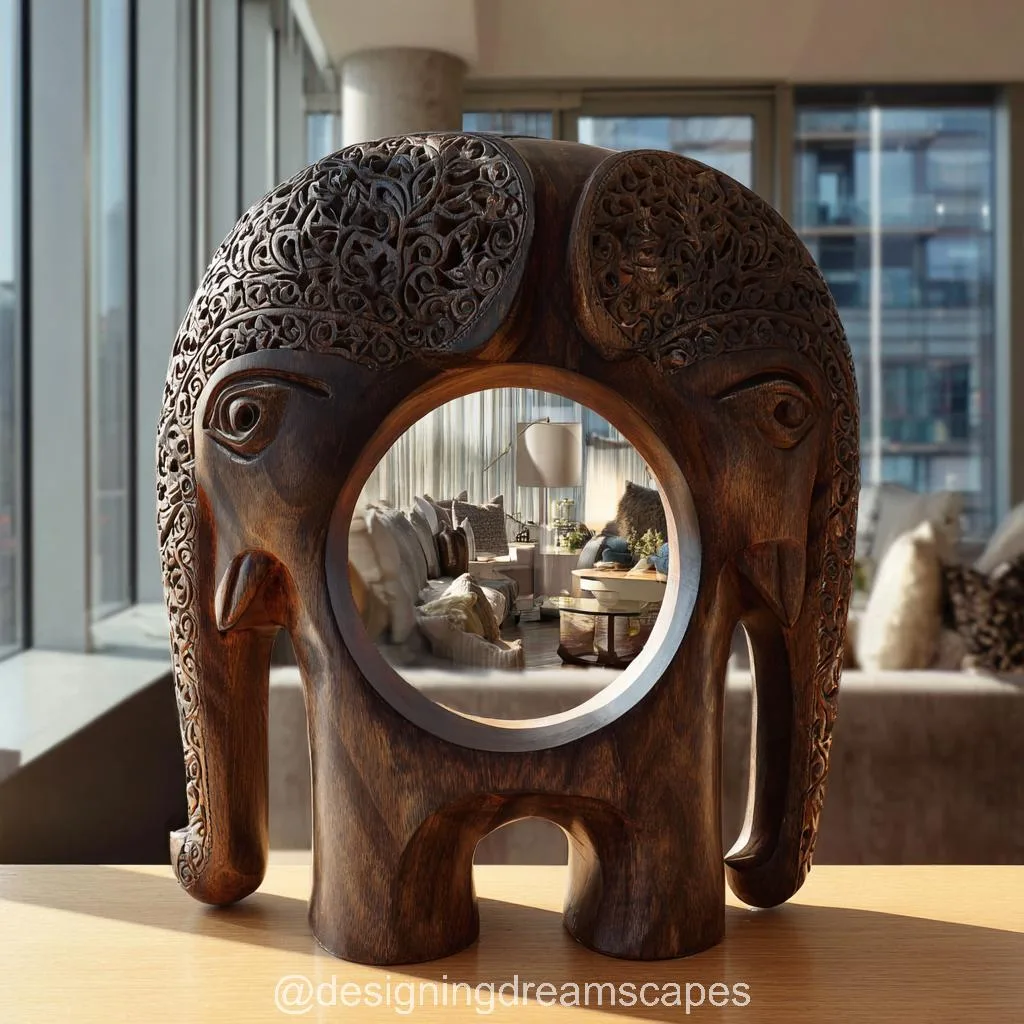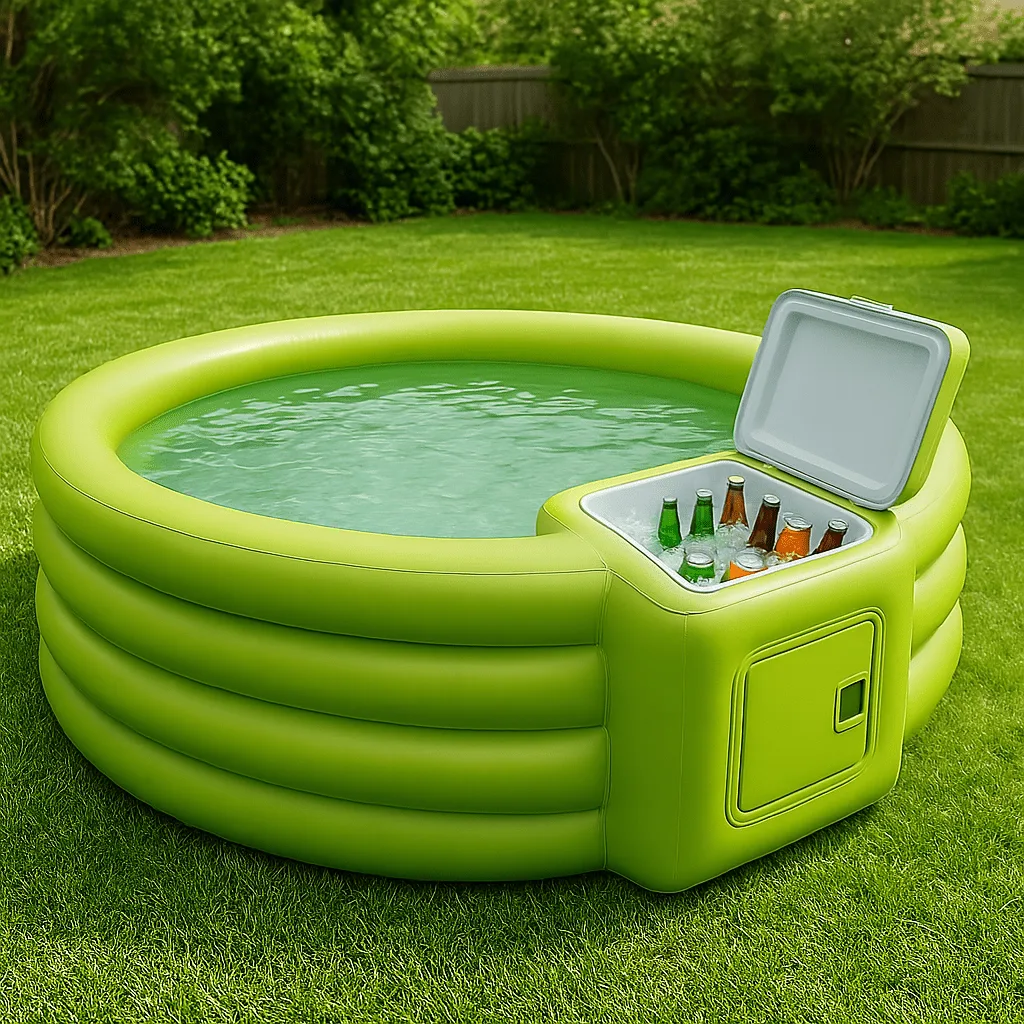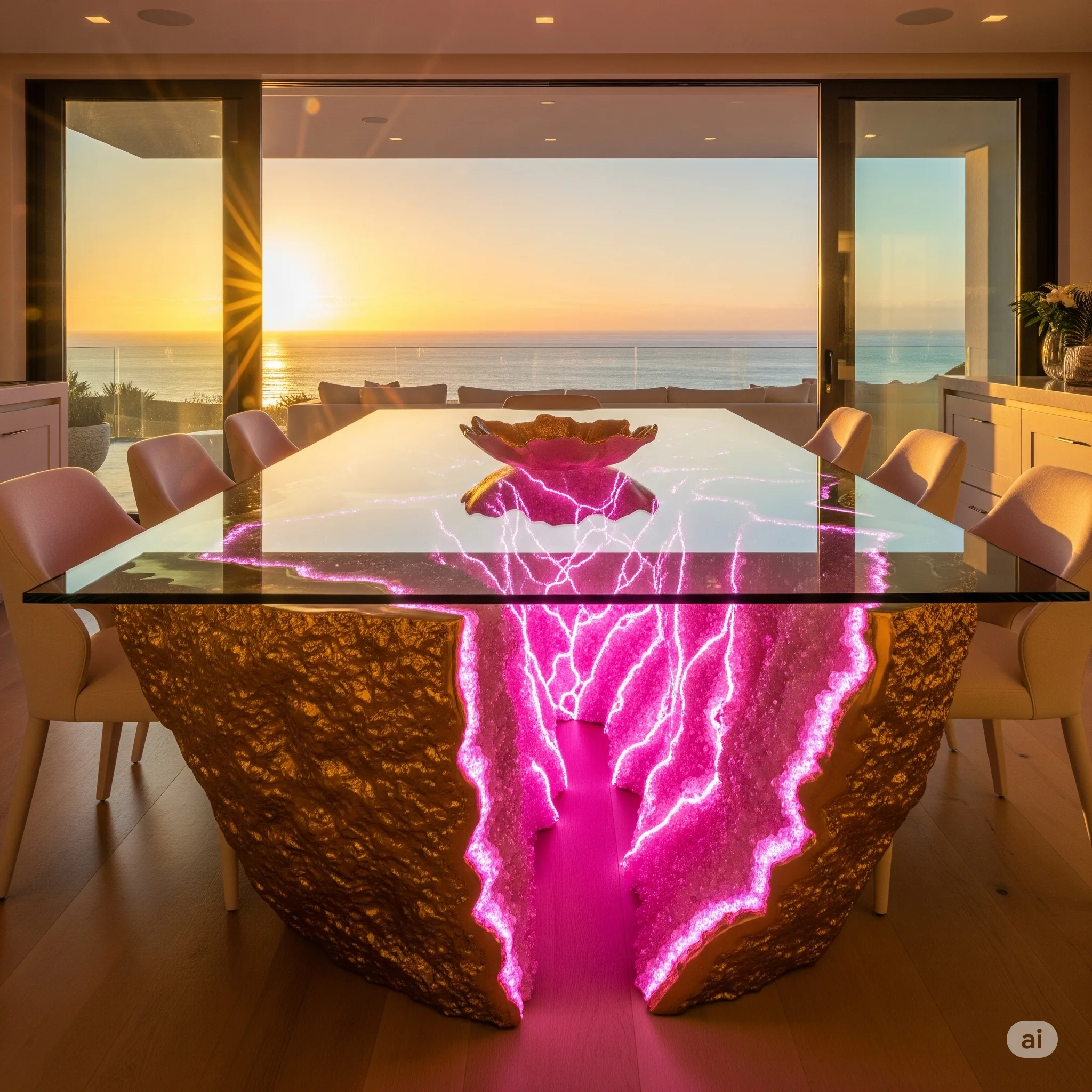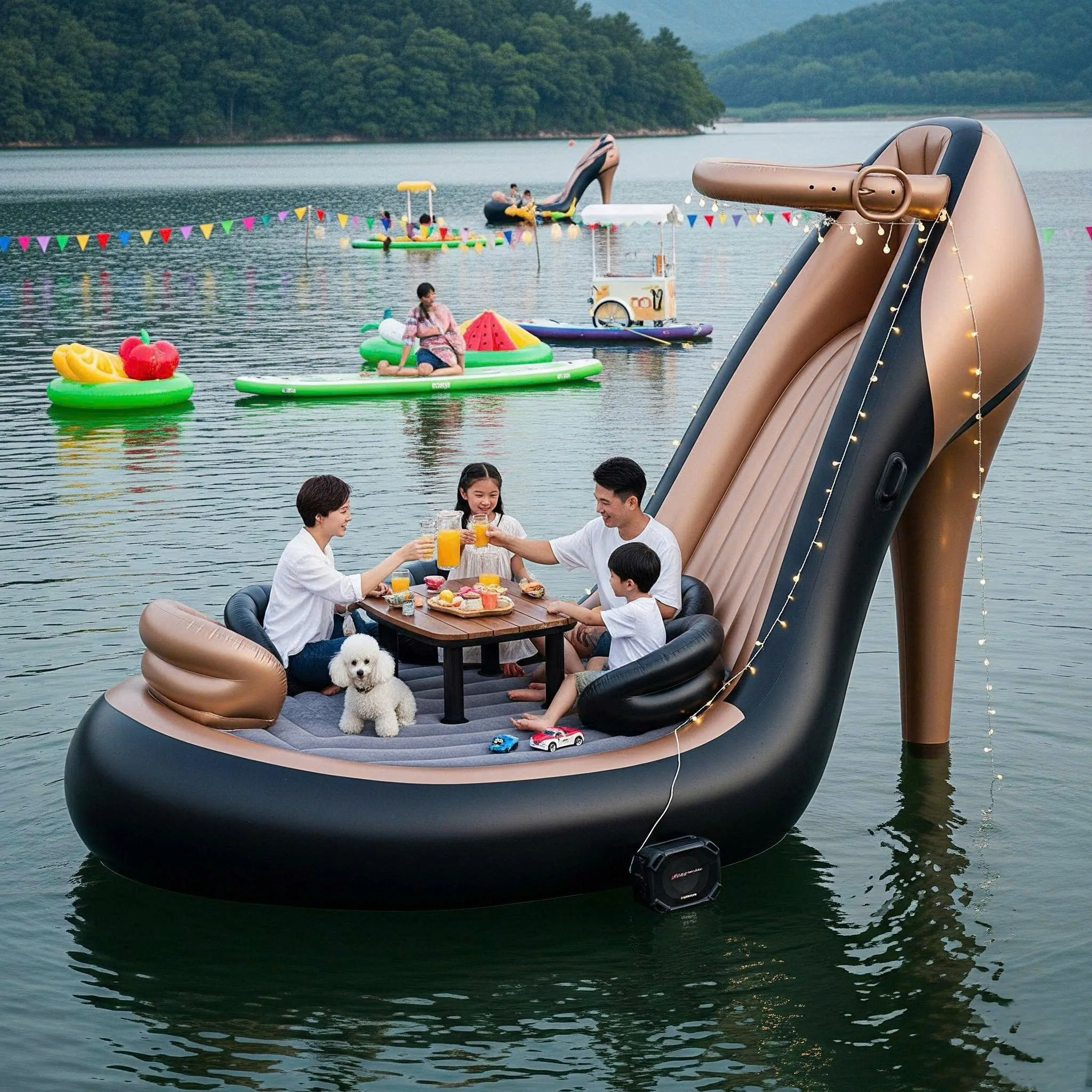The Rebirth of Bathing in Nature
Imagine immersing yourself in warm water as birds sing in the distance, the scent of cedar and lavender fills the air, and the soft rustling of trees calms your senses. This is the magic of a nature bathtub—an immersive, luxurious escape that blends the indulgence of a spa with the raw beauty of the natural world. Whether nestled in a forest clearing, overlooking mountain ridges, or crafted from elements like stone and wood, stunning nature bathtubs offer more than a bathing experience—they create a sensory journey that reconnects us with the earth.
These unique bathtubs are rising in popularity among nature lovers, wellness seekers, and design enthusiasts who crave tranquility, simplicity, and visual harmony. This article explores the rise of nature bathtubs, their design variations, materials, placements, wellness benefits, and why they’ve become symbols of eco-conscious luxury around the globe.
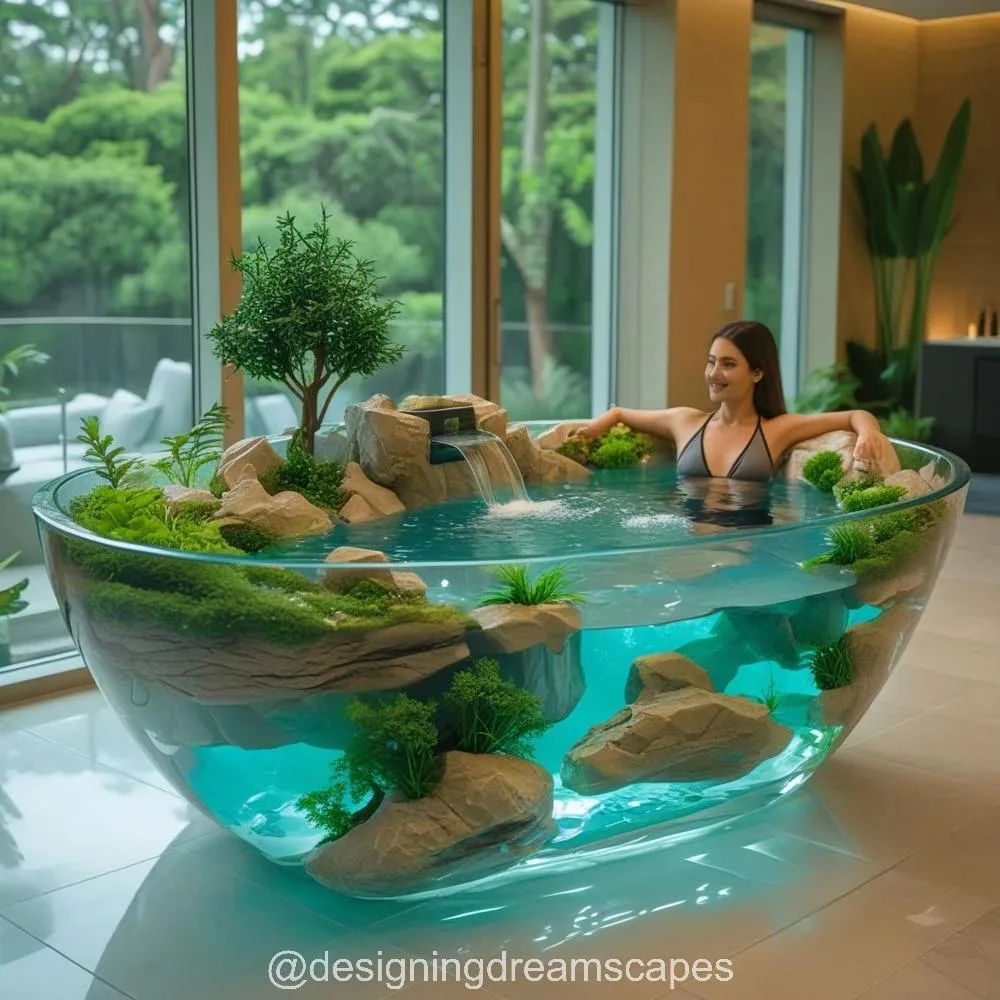
Contents
- 1 The Rise of Nature-Inspired Bathing
- 2 Types of Nature Bathtubs and Their Distinct Appeal
- 3 Materials That Define Natural Beauty
- 4 Integrating Nature Bathtubs Into Design
- 5 Wellness Benefits of Nature-Integrated Bathing
- 6 Popular Locations and Cultural Inspirations
- 7 Maintenance and Sustainability Considerations
The Rise of Nature-Inspired Bathing
Rediscovering Nature Through Daily Rituals
In an era defined by technology and artificial spaces, many homeowners are yearning for an escape—a way to return to natural rhythms. Bathrooms, once purely functional, are being reimagined as wellness sanctuaries. Among the most enchanting innovations is the integration of bathtubs into natural settings or the infusion of nature into bathtub design.
Nature bathtubs offer an intentional break from the synthetic. They invite water, stone, sunlight, foliage, and wood into one of the most intimate spaces in the home. This fusion of elements results in a transformative experience, both visually and emotionally.
From Luxury to Lifestyle
Nature-inspired bathtubs are no longer a rare feature in off-grid cabins or high-end eco-resorts. Increasingly, they are being integrated into urban homes, minimalist apartments, and suburban gardens. Their appeal lies in their ability to provide:
- Mental restoration
- Physical relaxation
- Aesthetic harmony
- A deeper connection with the earth
They reflect a growing awareness that self-care is not a trend but a necessity—and that our environment shapes our well-being.
Types of Nature Bathtubs and Their Distinct Appeal
Outdoor Nature Bathtubs
Outdoor nature bathtubs are among the most striking and liberating designs. They are placed in open-air environments—gardens, forests, rooftops, or beside waterfalls—where bathers are enveloped by the elements.
Key Characteristics:
- Typically freestanding
- Surrounded by natural foliage, water features, or sky views
- Often made from stone, copper, or wood to harmonize with the environment
Outdoor tubs encourage vulnerability and presence. There’s something primal and beautiful about bathing outdoors, exposed to the breeze and the shifting light.
Indoor Nature-Inspired Bathtubs
When outdoor placement isn’t possible, nature can be brought indoors through materials, views, and biophilic design.
Indoor Nature Bathtub Features:
- Oversized windows or skylights to allow views of trees or sky
- Surrounding green walls, hanging plants, or river stones
- Natural materials: bamboo, pebbled flooring, wood paneling, clay
These designs turn the bathroom into a tranquil cave or garden sanctuary. The goal is to blur the lines between interior space and the natural world.
Built-In Garden Tubs
Garden tubs are built into the landscape, usually at ground level. Often encircled by stones, moss, or planted borders, these tubs are serene cocoons where one can soak while feeling entirely part of nature.
Design Notes:
- Excellent for secluded backyards or wellness retreats
- Typically concrete, stone, or sculpted earth forms
- Accompanied by minimal lighting and natural textures
These tubs often mimic hot springs or river pools, offering a highly immersive experience.
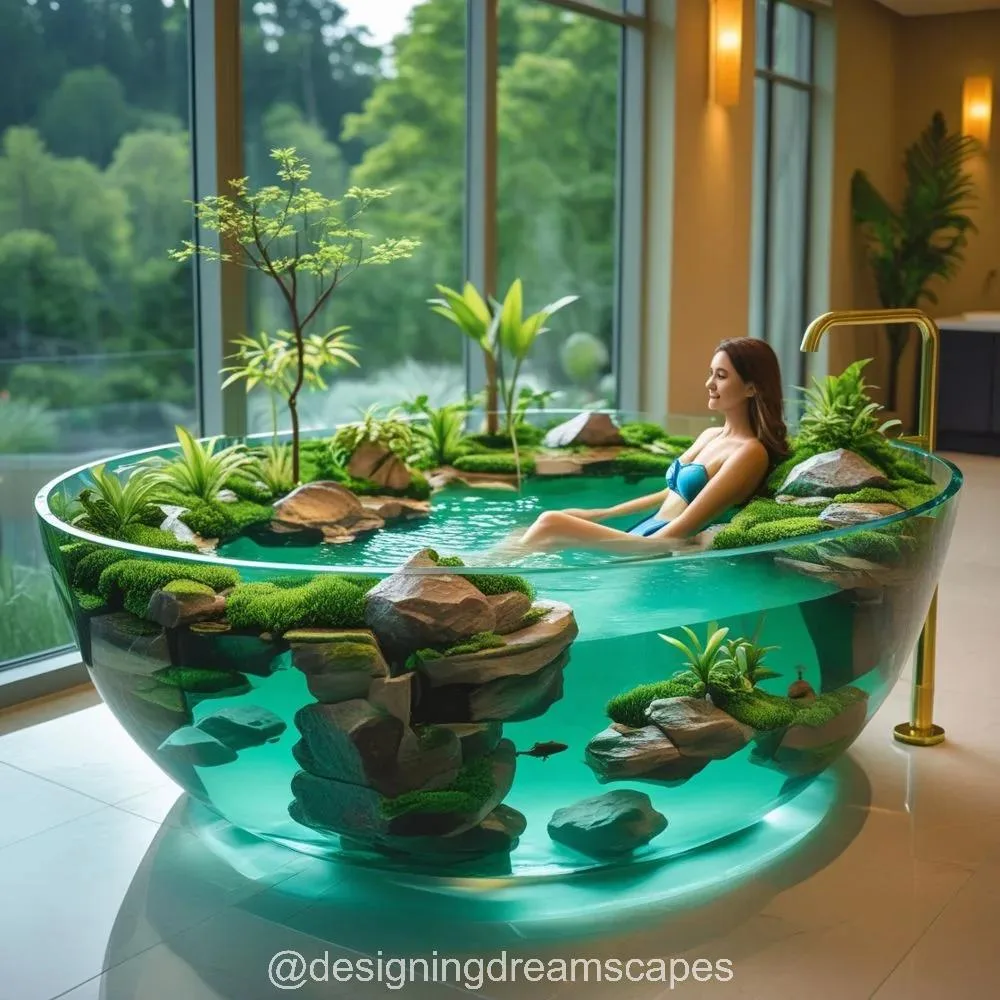
Treehouse and Elevated Bathtubs
An emerging trend is placing nature tubs on treehouse decks or elevated platforms with panoramic views. These bathtubs feel romantic and adventurous, perfect for retreats.
Highlights:
- Views of forest canopy or distant landscapes
- Often use copper, teak, or ceramic tubs
- Integrated into decks with rope railings or rustic wood floors
These tubs are for those who crave escapism and want to feel suspended above the bustle of life.
Materials That Define Natural Beauty
Stone and Rock
Perhaps the most iconic material for a nature bathtub is stone. Carved or constructed from granite, basalt, or river stone, these tubs feel ancient, grounding, and elemental.
- Holds heat exceptionally well
- Each piece is unique due to natural variation
- Best suited for outdoor or semi-enclosed spaces
Wood
Wooden tubs, often crafted from cedar, hinoki, or teak, exude warmth and organic charm. They bring Japanese onsen culture into modern homes.
- Soothing aroma, especially cedar and hinoki
- Biodegradable, renewable material
- Requires careful maintenance to prevent cracking or mold
Copper and Brass
For a rustic yet elegant look, copper and brass are popular choices. They develop a natural patina over time, blending beautifully with outdoor surroundings.
- Antimicrobial properties
- Excellent heat retention
- Aged finish enhances natural aesthetics
Clay, Cement, and Composite Materials
Clay or composite bathtubs can be sculpted to mimic boulders or organically shaped basins. These offer the most flexibility in form while maintaining an earthy feel.
- Moldable into unique, artistic shapes
- Can be tinted to match natural colors
- Durable and easy to maintain
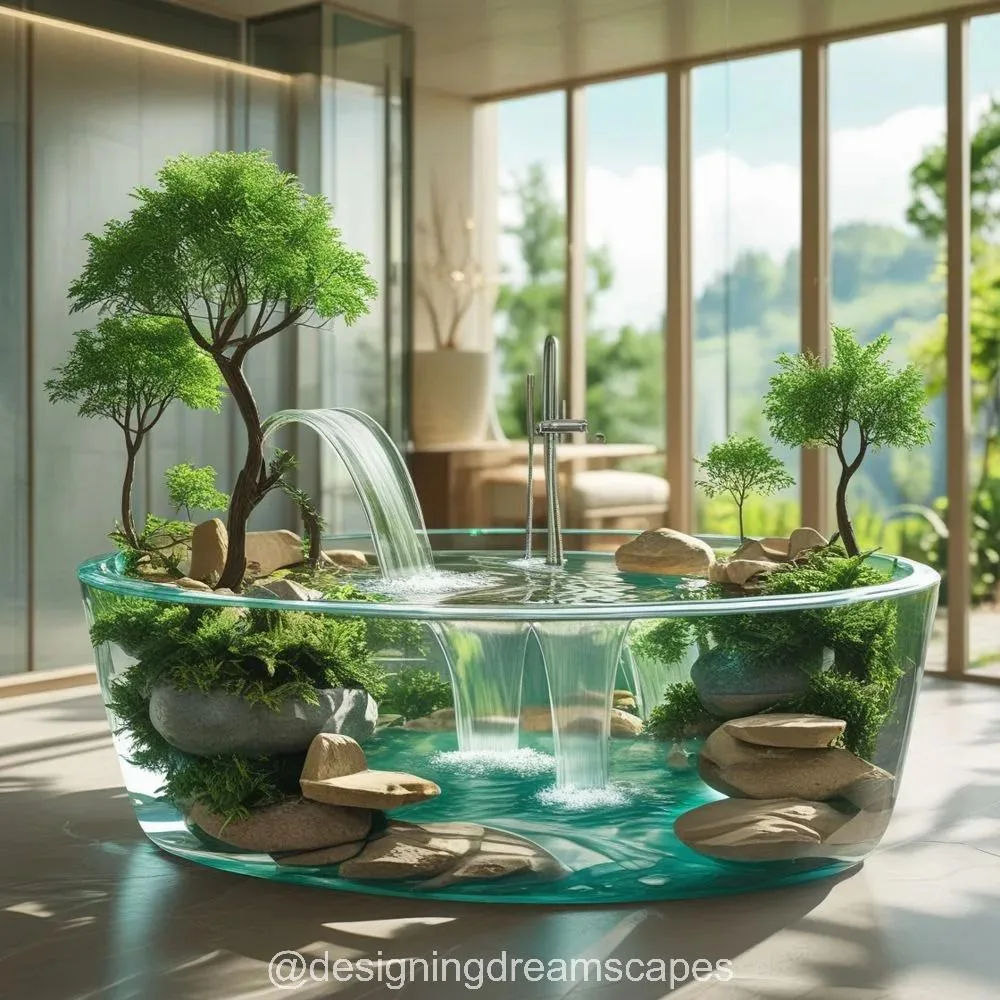
Integrating Nature Bathtubs Into Design
Maximizing Views and Vistas
Whether indoors or out, placement matters. Ideally, the tub should face or be surrounded by nature.
- For indoor tubs, use floor-to-ceiling windows with forest or mountain views
- For outdoor tubs, position near trees, streams, or gardens
- Skylights are ideal when horizontal views are limited
Layering Natural Elements
Complement the bathtub with a palette of organic textures and colors.
- River stones or pebbles for flooring
- Bamboo or rattan furniture
- Linen or cotton textiles
- Hand-thrown ceramic basins
Layering these elements creates harmony and deepens the sensory experience.
Lighting and Sound
Nature bathtubs should be experienced in soft light and soothing soundscapes.
- Use warm, diffused lighting or solar lanterns
- Integrate water features like fountains or small cascades
- Consider outdoor speakers with natural soundtracks or wind chimes
These layers complete the immersion, making the experience holistic and calming.
Wellness Benefits of Nature-Integrated Bathing
Physical Relaxation
Warm water already relaxes muscles and reduces tension. Add the presence of nature, and the benefits multiply.
- Trees and plants release phytoncides, which may reduce stress hormones
- Fresh air boosts circulation and oxygen flow
- Natural materials like wood can have calming aromatherapeutic effects
Emotional Restoration
Nature is known to lower cortisol, reduce anxiety, and increase feelings of awe. A bathtub placed within or inspired by nature provides:
- A meditative pause in the day
- Emotional decompression from technology and noise
- A gentle reminder of our place in the natural world
Enhanced Sleep and Recovery
Bathing in warm water before bed helps regulate body temperature and signals the body to enter sleep mode. When this routine is paired with nature, its effectiveness grows.
- Improved sleep quality
- Faster post-exercise recovery
- Reduced symptoms of burnout or fatigue
Popular Locations and Cultural Inspirations
Scandinavian Forest Tubs
Minimalist wooden tubs placed on forest decks with snow-dusted trees all around are popular in Nordic countries. These focus on hygge—coziness, simplicity, and connection with the seasons.
Japanese Onsen-Style Tubs
In Japan, traditional ofuro tubs are deep, wooden soaking tubs used for ritual purification and relaxation. When placed in gardens or indoors with Zen design, they invite deep stillness.
Balinese Garden Baths
Often surrounded by lush jungle, vines, and carved stone, Balinese tubs are tropical havens. They use floral oils, incense, and open skies to elevate the sensory journey.
Western Eco-Luxury Retreats
Many eco-resorts and off-grid lodges in the Americas, Australia, or Europe now offer dramatic nature bathtubs as their signature feature. These serve as both a luxury and a lifestyle statement.
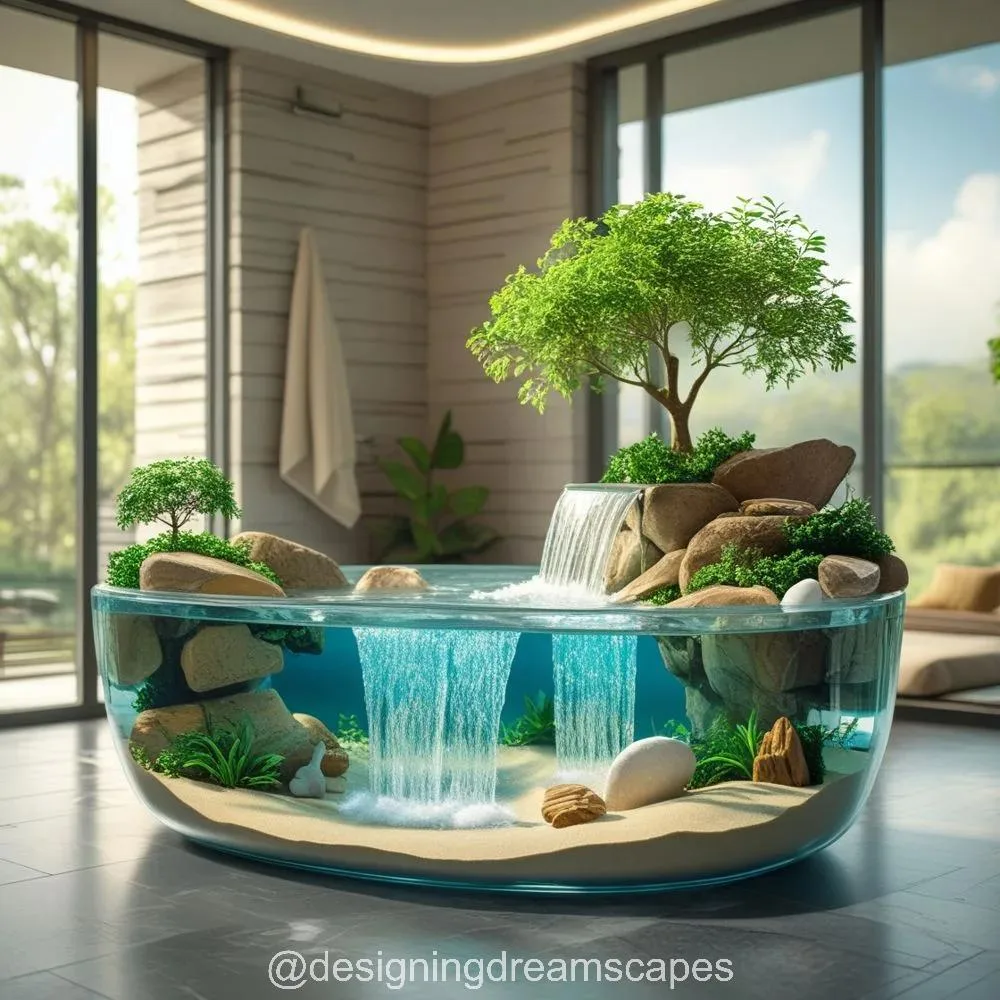
Maintenance and Sustainability Considerations
Regular Cleaning with Natural Products
To protect both your health and the environment, use plant-based, biodegradable cleaners. Avoid harsh chemicals, especially on stone or wood.
Weatherproofing for Outdoor Tubs
If placed outside, your tub must withstand temperature fluctuations:
- Use covers when not in use
- Apply sealants to wood or stone
- Ensure proper drainage to avoid water stagnation
Water Conservation
Eco-conscious luxury also means being mindful of water use:
- Install aerators or low-flow valves
- Reuse gray water for landscaping
- Use your bathtub as a mindful ritual, not a daily habit
The stunning nature bathtub is more than a design trend—it is a return to what is essential. It invites us to pause, breathe, and immerse ourselves in simplicity and serenity. Whether carved from stone, crafted from wood, or placed beneath open sky, it becomes a place where time slows and connection deepens—not just with ourselves and our surroundings, but with something ancient and grounding.
For those designing their dream home or retreat, the nature bathtub is not just a luxury fixture—it is an experience. One that blends form with feeling, aesthetics with emotion, and the physical with the spiritual. In a world full of noise, these baths speak in silence—and that may be their greatest gift of all.
